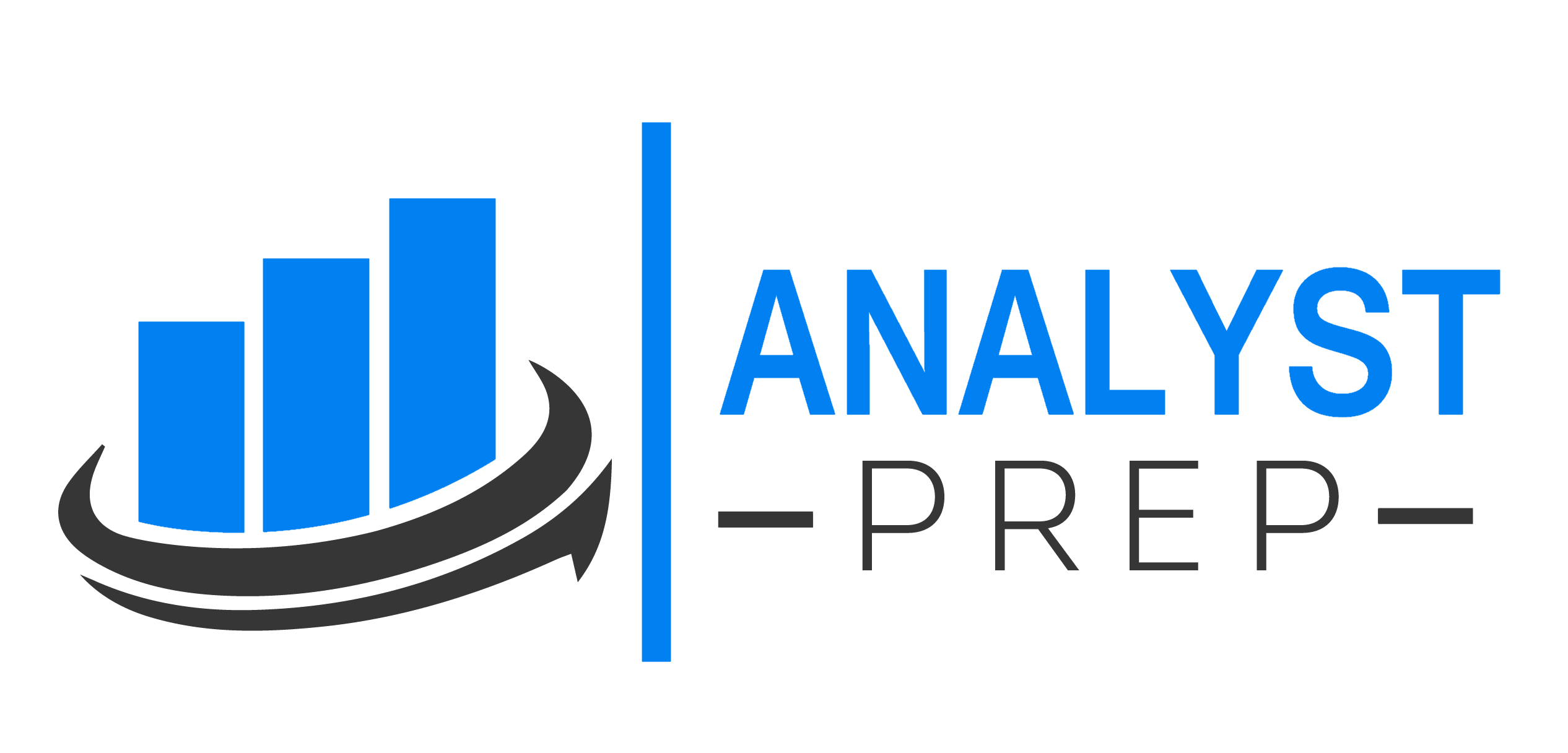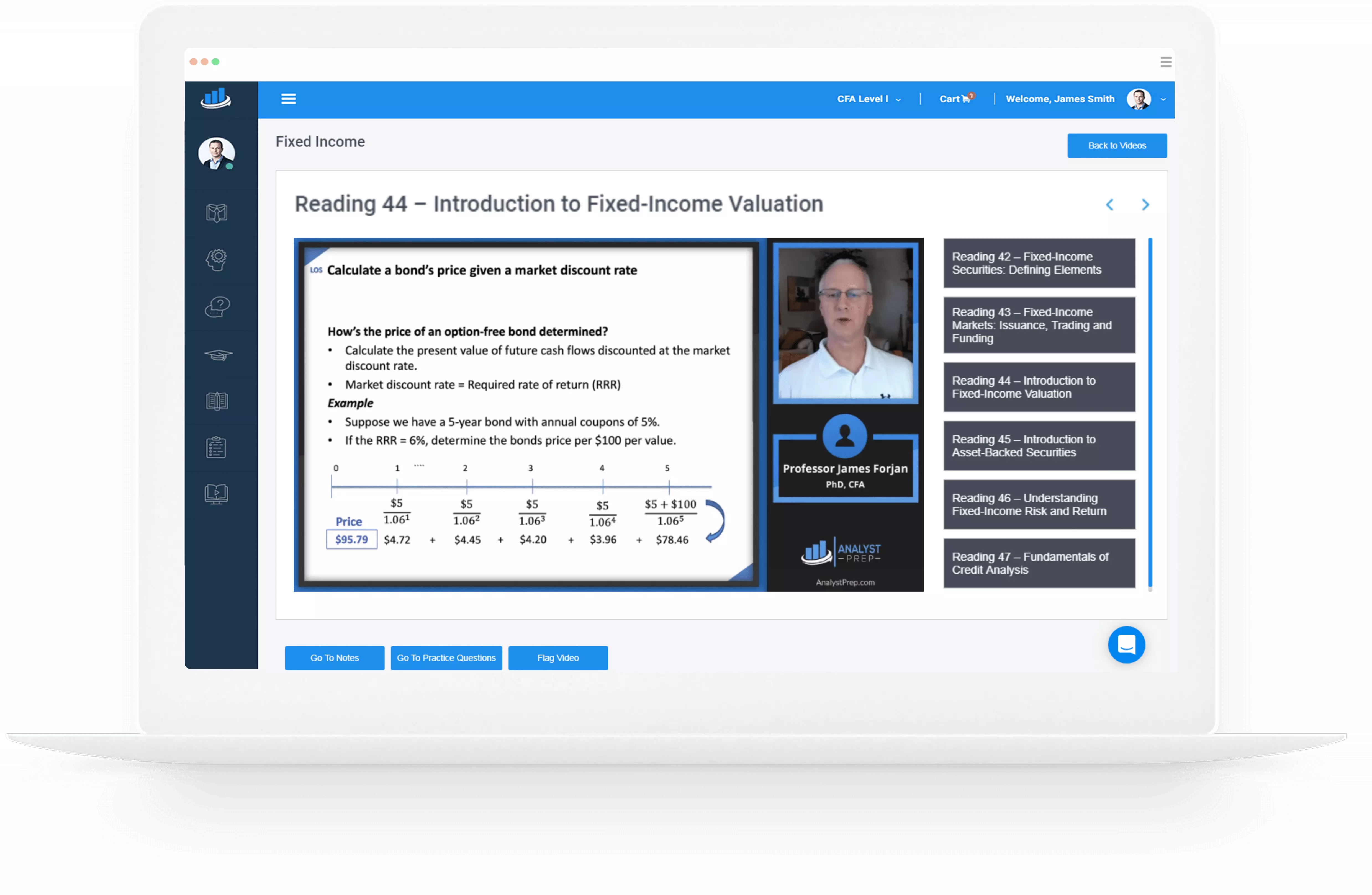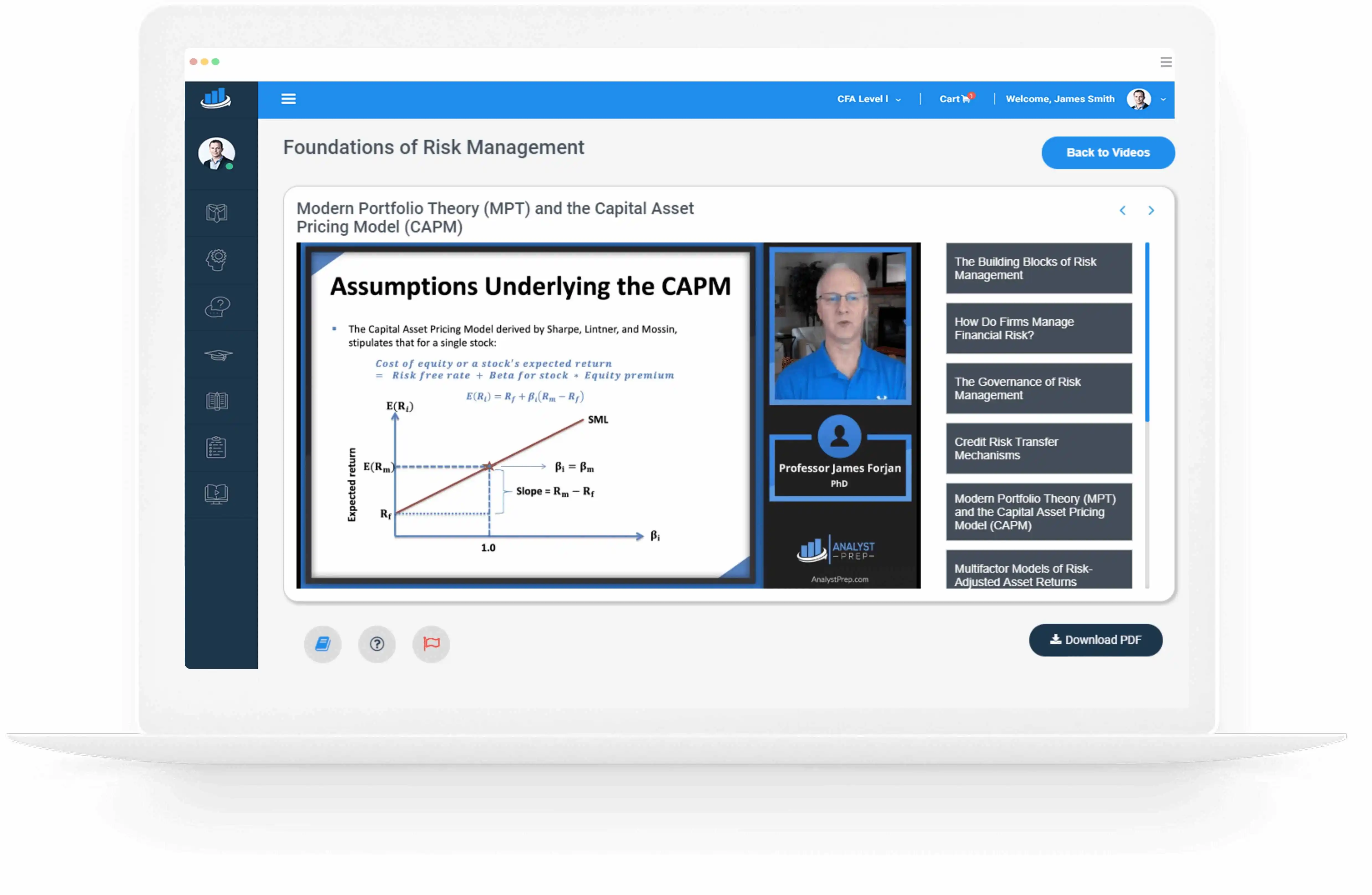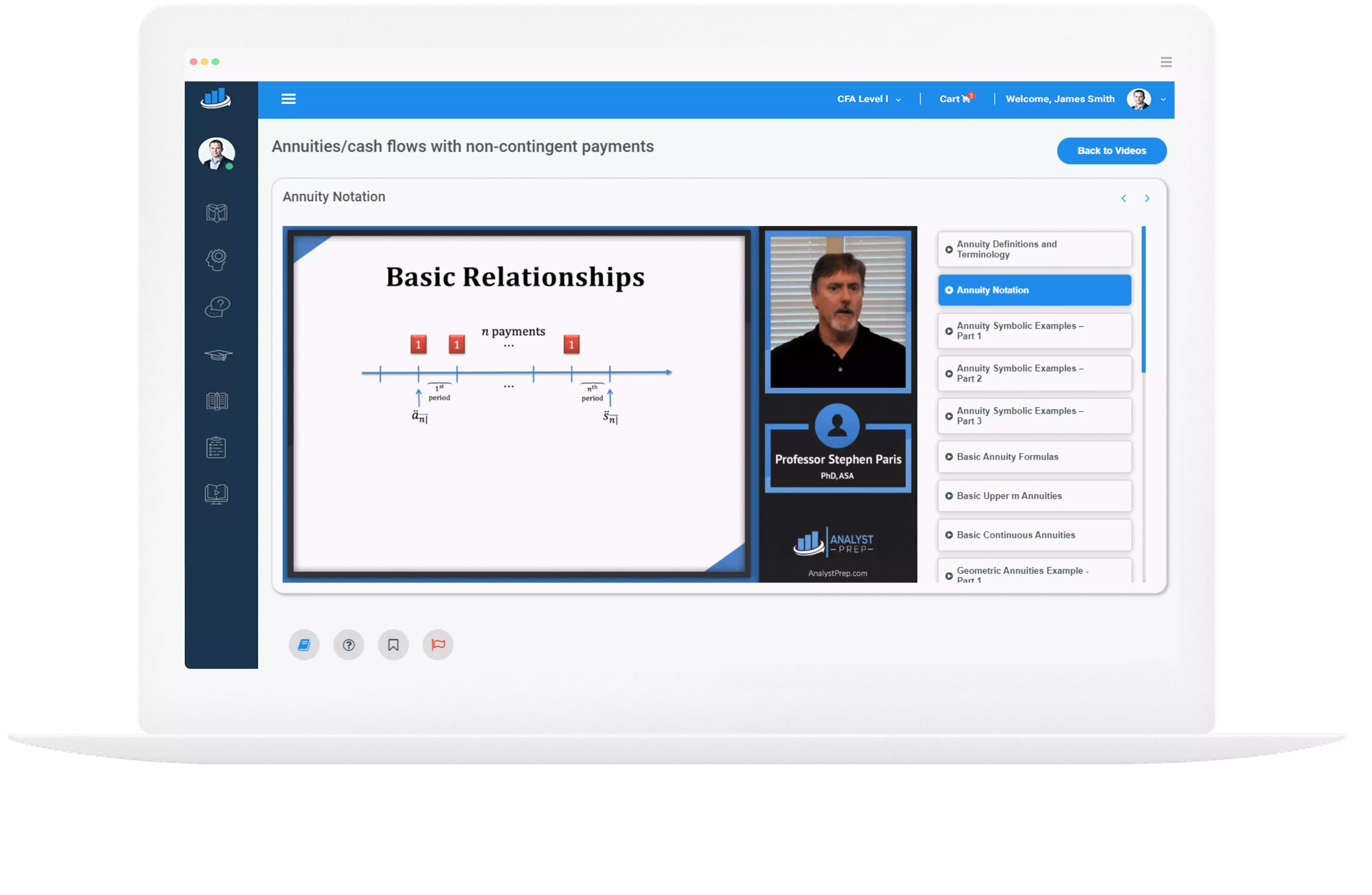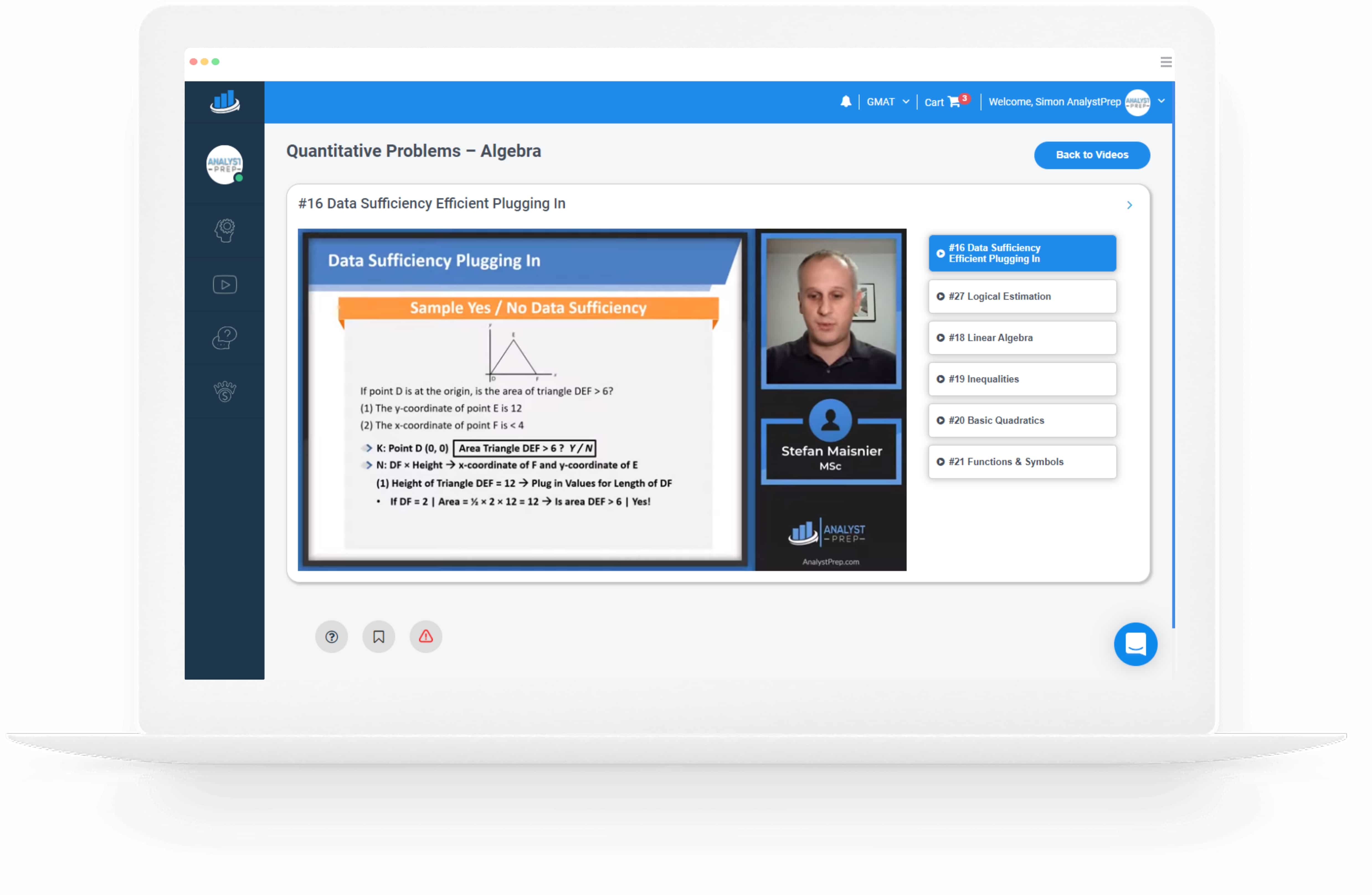Regression with a Single Regressor – Hypothesis Tests and Confidence Intervals
[vsw id=”InA-x54arGg” source=”youtube” width=”611″ height=”344″ autoplay=”no”] After completing this reading you should be able to: Calculate and interpret confidence intervals for regression coefficients. Interpret the \(p-value\). Interpret hypothesis tests about regression coefficients. Evaluate the implications of homoskedasticity and heteroskedasticity. Determine…

Bayesian Analysis
[vsw id=”ulnOQ0ex36Y” source=”youtube” width=”611″ height=”344″ autoplay=”no”] After completing this reading you should be able to: Describe Bayes’ theorem and apply this theorem in the calculation of conditional probabilities. Compare the Bayesian approach to the frequentist approach. Apply Bayes’ theorem to…
Linear Regression
After completing this reading, you should be able to: Describe the models that can be estimated using linear regression and differentiate them from those which cannot. Interpret the results of an OLS regression with a single explanatory variable. Describe the…

Common Univariate Random Variables
After completing this reading, you should be able to: Distinguish the key properties among the following distributions: uniform distribution, Bernoulli distribution, Binomial distribution, Poisson distribution, normal distribution, lognormal distribution, Chi-squared distribution, student’s t, and F-distributions, and identify common occurrences of…
Regression with Multiple Explanatory Variables
After completing this reading, you should be able to: Distinguish between the relative assumptions of single and multiple regression. Interpret regression coefficients in multiple regression. Interpret goodness of fit measures for single and multiple regressions, including R2 and adjusted R2….
Basic Statistics
[vsw id=”-XK6BCMnkSQ” source=”youtube” width=”611″ height=”344″ autoplay=”no”] After completing this reading, you should be able to: Interpret and apply the mean, standard deviation, and variance of a random variable. Calculate the mean, standard deviation, and variance of a discrete random variable….
Fundamentals of Probability
After completing this reading, you should be able to: Describe an event and an event space. Describe independent events and mutually exclusive events. Explain the difference between independent events and conditionally independent events. Calculate the probability of an event for…
Hypothesis Tests and Confidence Intervals in Multiple Regression
[vsw id=”7MaeKHnLjfk” source=”youtube” width=”611″ height=”344″ autoplay=”no”] After completing this reading you should be able to: Construct, apply, and interpret hypothesis tests and confidence intervals for a single coefficient in a multiple regression. Construct, apply, and interpret joint hypothesis tests and…
Modeling Cycles: MA, AR, and ARMA Models
[vsw id=”W5Z4ycq62V0″ source=”youtube” width=”611″ height=”344″ autoplay=”no”] After completing this reading you should be able to: Describe the properties of the first-order moving average (MA(1)) process, and distinguish between autoregressive representation and moving average representation. Describe the properties of a general…
Modeling and Forecasting Seasonality
[vsw id=”hGBpM3dtrYY” source=”youtube” width=”611″ height=”344″ autoplay=”no”] After completing this reading you should be able to: Describe the sources of seasonality and how to deal with it in time series analysis. Explain how to use regression analysis to model seasonality. Explain…
